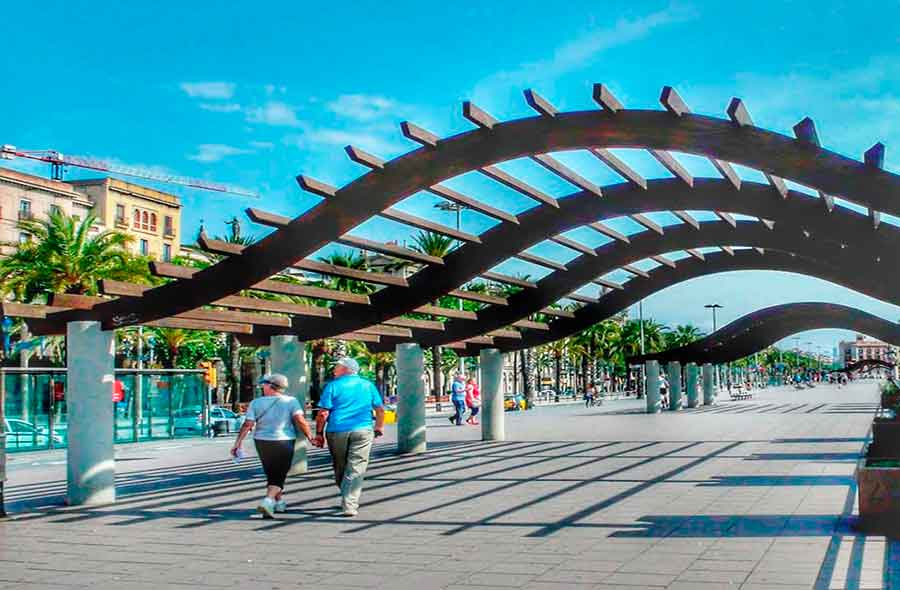

It was the first port of the city, when Barcelona was Roman. In the nineteenth century was a barrier that separated the city from the sea due to port activity and maritime trade. His real name is Moll de Bosch i Alsina, in honor of a Catalan politician and entrepreneur who became rich in Cuba.

At present its popular name is “Moll de la Fusta” (or Quay of the Wood in English) since a long time ago it worked like deposit and stowage of wood.
In 1987 it was remodeled under the direction of the architect Manuel de Solá Morales. In the works, the railway line was suppressed and the Ronda Litoral was built
for the traffic rolled to a lower level, the walk and a parking.
The pedestrian walk also had two levels, one lower, just at the edge of the sea and another higher. The upper level had been designed for a leisure area, so it
was filled with restaurant and terraces. The idea did not work and now there are only wavy pavilions.
As urban elements we can find old lampposts and wooden benches; sculptures, such as "The Couple" by the Chilean artist Lautaro Diaz or the famous "The Prawn
by Javier Mariscal. Also of a single centenary sailboat and the replica of Nao Victoria, the first ship that circled the world in the expedition of Fernando de Magallanes.
On the other side of the pier you can see the Maremagnum, the Rambla Mar
with its drawbridge and the Aquarium.
On this Guest House, the time stood still and you can relax to plan your day without pressure.
Historical building with cozy rooms for all budgets. Due is not necessary to spend a lot of money to enjoy a good located accommodation.
Good located and cozy Guest House near all the important
point that you would love to visit in Barcelona.
Totally renovated Guest House with all comfort that you would like to have during your stay in Barcelona.
FOLLOW US!